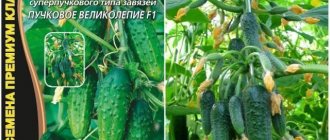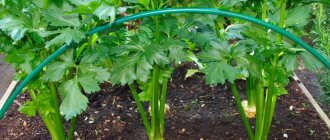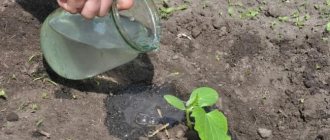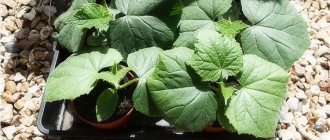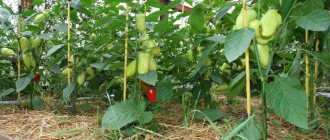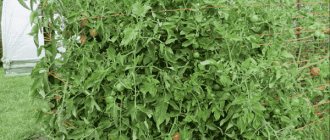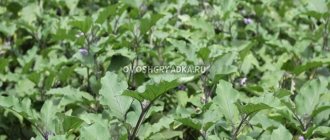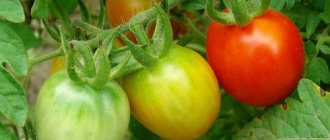According to adherents of a healthy lifestyle, celery is one of those plants that must be on the menu. It contains a lot of vitamins necessary for the functioning of the body. And gourmets note its special taste, which adds a spicy note to dishes. How to grow petiole celery from seeds?
Petiole celery: beneficial properties for the body
This greenery contains many vitamins: A, group B, K, C, PP. There are minerals such as potassium, iron, calcium, phosphorus. Lots of folic acid and fiber. It is also low in calories.
Dishes with celery are recommended for:
- Maintaining the digestive system;
- Getting rid of fats;
- Cancer prevention;
- Improving immunity;
- Removing harmful substances from the body;
- Normalization of the nervous system;
- Regulation of metabolism.
Despite the usefulness
Celery is not recommended for consumption by people with stomach problems or diseases of the genitourinary system. In addition, those who are intolerant to it are prohibited from eating.
Recipe:
Celery smoothie
Varieties of root vegetables
This plant has several varieties. They concern the external structure. There are three types of celery:
- sheet;
- root;
- petiole.
This plant can be a beneficial addition to any dish without losing its beneficial qualities during cooking. Fortunately, celery is a dietary product and does not harm your figure.
Cultivation of stem celery occurs for the sake of juicy petioles-stems. Currently, the petioles are white or green. The difference in color does not refer to varieties of varieties - the same species can have different colors. The coloring is influenced by growing methods. For example, a white color appears if celery is hilled by placing the stems deep in the soil.
The difference in the color of the petioles is also accompanied by a variety of taste. In white it is more delicate in contrast to green, which is characterized by a more bitter taste. Celery with white stalks is valued higher, as it is more pleasant to eat and also lasts longer than green celery. Due to the juiciness of the stems of the petiole vegetable, they are used in salads, and the leaves of the plant are more valued as a spice.
Requirements for growing conditions for petiole celery
Petiole celery is a capricious plant that prefers a special climate. For colder areas, it is recommended to start seedlings first. In areas with a mild, warm climate, you can sow seeds in open ground without fear that the plant will not sprout.
What climate does he like?
The fertile time is late spring and early summer. There is no excessive heat here, and this crop is not afraid of slight frosts. The optimal temperature is +20-25 degrees.
What kind of soil is needed for growing
The land needs to be rich in nutrients, fertile, and manured. Therefore, when preparing a bed for celery, gardeners add manure to the soil in the fall. If the bed is prepared in the spring, then humus is used.
Bleaching petioles
When growing many varieties, a procedure such as bleaching the petioles will be required. It is performed to improve taste.
More recently, gardeners grew such varieties in peculiar trenches and hilled them up during the summer, gradually covering the stems with soil. Nowadays, another method is increasingly being used.
A few weeks before harvesting, the leaves are carefully tied into bunches using strips of fabric, and the stems are covered with paper, burlap or lutrasil. You can use dark colored plastic bottles. It is advisable to pour sawdust or dry leaves into them.
Do not wrap stalks of petiole celery with film. If there is a lack of oxygen, it will die.
How do you know when it's time to start whitening? By this moment, new leaves in the rosette stop forming, the stems reach a height of 30-35 cm and thicken.
How to grow petiole celery: through seedlings or sowing in open ground
At favorable temperatures, the crop is planted in open ground in mid-April. If the spring is long, with frosts, then it is better to postpone the planting time to May.
In the Urals
Growing seedlings in this region is better developed. Summer is short and can bring unpleasant weather surprises, so why take the risk by sowing seeds in open ground. It's better to prepare the seedlings. Seeds for seedlings are sown in February-March, seedlings are taken out to the beds in May-June.
In Tatarstan
It is more profitable to grow seedlings; sowing begins in March. In May-June, the seedlings are transferred to the beds.
In outskirts of Moscow
It is preferable to grow celery without going through the seedling stage. This crop is sown for seeds in late February, in March. Sprouts are planted in open ground in May.
In the Leningrad region
To grow seedlings, seeds need to be sown in early March. Planted in open ground in June.
In Siberia
Sow at the end of February to get good seedlings by spring. For beds (after transplanting), covering material is used to protect the plant from wind and frost.
In Belarus
The crops are sown in February and sent to the beds in the last month of spring.
In the middle lane
They begin to sow in February, this is the most favorable time for the seedlings to become well established before planting in open ground.
Successful varieties
In garden centers you can find seeds of domestic and foreign varieties of petiole celery. When choosing, pay attention to the ripening time - for regions with a cold climate, early and mid-early varieties are preferable; for greenhouses, mid-late varieties are also suitable.
Taste characteristics play a role. If you like a piquant bitterness, plant celery with green stalks; adherents of traditional neutral tastes will like self-bleaching or yellow-fleshed plants. Here is a brief description of several of the most successful varieties.
- Utah celery was bred by Italian breeders. The petioles are long, light green, very tasty, practically without fibers. In terms of ripening time, the variety is medium, the yield of stems with leaves is up to 3.5 kg/m².
- Malachite is one of the earliest varieties (85 days), allowing you to enjoy healthy products already in the middle of summer. Productivity – 1.2 kg of petioles per plant.
- Nuget is a variety of petiole celery of Czech selection. Among the advantages are early ripening, a neat, tightly closed rosette of stems, pleasant taste and aroma.
- Tango is a common variety with bluish-green petioles. It takes a long time to ripen - the growing season is 180 days. It attracts with its delicate, fiber-free pulp, high yield (1.0 kg per plant), and excellent keeping quality.
- Golden will appeal to lovers of self-bleaching varieties. From one plant, up to 800 g of elastic petioles with light pulp, pleasant taste and aroma are collected.
How to grow celery seedlings
In order for seedlings to grow healthy, you need to take care of preparing seed material, special soil, timely watering and fertilizing, and creating the necessary temperature and light conditions.
Sowing
You need to sow in March. To do this, use boxes into which soil is poured. But the container must first be disinfected to prevent possible damage to the plant by harmful bacteria. Peat is introduced into the soil so that the soil is fertile for seeds and moistened. When the soil is laid out in boxes, it is leveled, and the seeds are sown directly on it, without pre-made furrows. Afterwards, you need to put a board on top of the seeds, which will press the seed material to the soil.
You need to remove the board, sprinkle the seeds with soil, and then put the board back and press down. Then the board is removed and the planted seeds are watered. To ensure that the moisture is evenly distributed, it is recommended to use a spray bottle. The boxes are then covered with polyethylene and put away in a warm place where the air temperature is not lower than 20 degrees Celsius. The film will create a greenhouse effect; the seeds will be comfortable in such an atmosphere. However, from time to time the film must be lifted so that the seeds do not suffocate. At the same time, check the soil; if it becomes dry, it needs to be watered.
It will take about two and a half weeks for the shoots to appear. When timid sprouts appear on the surface, the film must be removed and the container with seedlings placed in the light, but the temperature should be within 17-18 degrees Celsius.
Picking
With the appearance of the first true leaves, celery begins to be prepared for transplanting into separate containers. Three leaves have appeared - it’s time to dive. It is better to take a container with a volume of 200 ml; the sprouts will be comfortable in such “temporary containers” before going to the garden plot. Choose strong sprouts for diving.
Soil for cups is a mixture of humus and turf, sand and peat (preferably lowland).
The picking procedure is carried out as follows:
- Water the seedlings 24 hours before picking.
- Prepare the soil and place it in containers, make a hole.
- Using a narrow spatula, separate the sprouts from each other in a common box so that the roots are in an earthen coma.
- Insert the sprout into the hole, pinching the central root.
- Cover the hole with soil without covering the growing point.
- Water with a spray bottle. Add Gumi to the water (6 drops per liter of water).
- Sprinkle with a little soil.
- Place the container in a bright room where there is no direct sunlight.
Care
Petiole celery is a slow growing crop. Therefore, you should be patient until the plant is ready to move to the garden plot.
When seedlings appear, you need to monitor the appearance of the sprouts, check the soil moisture, maintain the required temperature, protect the seedlings from possible diseases, and feed them so that they grow strong and healthy.
We must remember
that celery leaves are very delicate, they will be damaged by direct sunlight, so you need to place the container with the seedlings so that it is light and not hot. If there is not enough daylight, you need to install lamps next to the container so that the plants receive the right amount of light.
You need to water the seedlings so that the soil is moist, but not soggy. After watering, be sure to carefully loosen the soil. Water the seedlings generously a few days before moving to the garden plot.
Seedlings need feeding. Two weeks after the picking procedure, the seedlings are fed; for this purpose, a solution of nitrophoska is prepared by diluting a teaspoon of the drug in three liters of water. Each sprout receives two tablespoons of solution. Complex fertilizers can be used. For example, dilute a tablespoon of potassium nitrate in five liters of water and water the seedlings with the solution.
For preventive purposes, seedlings are sprayed with a weak solution of potassium permanganate. For prevention, spraying with a fungicide is also used to protect seedlings from fungal diseases.
Features of care
For seedlings to be strong, they must be properly cared for. There are several recommendations that will help you properly care for celery.
Top dressing
Cow manure is the best food for celery
Greens grown at home must be fed with liquid organic fertilizers. A solution made from cow dung is ideal for this. To make it, you need to mix 1 kg of manure with 5 liters of water and leave for three days. You can also use fertilizers based on nettles or bird droppings.
Sometimes you can fertilize celery with mineral fertilizer mixtures. For example, a week and a half after planting, the beds are fertilized with a solution of Nitrophoska.
Important! Also, the bushes must be regularly fed with nitrogen-containing fertilizers. This will protect the greens from premature wilting.
Whitening
To make the plant stems more tender, you will have to bleach. To do this, in September all the petioles of the bushes are shaded. To make sure that the celery is ready for bleaching, you need to carefully inspect the bushes. If they have fully formed rosettes, then vegetative development has ended and you can start bleaching.
Using cardboard is the easiest way to bleach petioles
Each green celery stalk should be wrapped in cardboard, straw or wrapping paper. They must be wrapped very carefully so that sunlight does not reach the surface of the plant.
Pests and diseases
During the growing process, petiole greens can suffer from diseases such as:
- Septoria. A dangerous disease, the development of which affects the ground part of the bushes. The foliage is covered with brown spots. The stems become more fragile. To prevent the occurrence of septoria, it is necessary to regularly remove weeds from the site and observe crop rotation.
- Fomoz. With this disease, the petioles break and turn brown. It is impossible to cure Phoma, so the affected plants must be destroyed.
- Rust. Reddish swellings on the foliage indicate the appearance of rust. Fungicidal agents will help get rid of it.
Among the dangerous pests that attack celery are:
- psyllid;
- aphids;
- celery fly.
How to prepare a bed for growing celery
In May, when it gets warm outside, celery goes to the garden plot, where it is transplanted into open ground. But first, the garden bed is put in order: fertilizing is introduced, it is dug up, garbage is removed, and it is treated with fungicides. It is not recommended to plant it in the same bed where it grew last year. Bacteria may remain in the soil, which, despite all the precautions taken by gardeners, can cause plant diseases.
Holes are made in the garden bed so that there is a gap of 30 cm between the sprouts. As soon as the seedlings are planted, they need to be fed. To do this, take a solution of mullein.
Experienced gardeners make not just holes, but trenches. The width of such a trench is approximately 40 cm, the depth is equal to the bayonet of a shovel. Humus and superphosphate are placed in the trench in the fall, the “filling” is covered with earth and left until spring.
Reproduction
Celery reproduces by seeds. The best plants are selected as mother plants, carefully dug up before frost sets in, the leaves are cut into a cone, and stored in plastic bags in a cellar or basement.
In the second year, celery root is planted in a garden bed to obtain seeds. First, sparse greenery appears, then high, up to 1 m arrow. Flowering occurs 2 months after planting the root crop, and lasts about three weeks.
From the moment the celery mother plant is planted until the seeds are collected, 140-150 days should pass, by which time they should change color from green to greenish-violet. The seeds are ripened under a canopy or in a ventilated area and threshed.
In the Northwest they may not have enough time to mature in the ground. It is recommended to pinch the top of the flower shoot when enough seeds have formed on it - each plant can produce 20-30 g of seeds. This is more than enough to provide yourself, neighbors and friends with planting material.
How long does stalked celery last?
To ensure that celery is stored well, you must follow these rules:
1. Place in the cellar, here the shelf life increases to two months. In this case, the roots are not removed, but are immersed in sand. Temperature 0-+4 degrees.
2. Remove the leaves, root and place in the refrigerator, this can be stored for up to three weeks, the temperature is about 4 degrees Celsius;
3. Freeze, temperature 18 degrees below zero;
4. Dry, shelf life increases to a year, room temperature.
5. Salt by taking a glass of salt per kilogram of culture, place in a container and close.
Characteristics of types of culture
In the climatic conditions of the country, varieties that have high yields and resistance to external factors are most often grown.
Root
It is distinguished by the formation of a large root crop weighing 0.5-0.9 kg; ripening periods vary between 140-190 days depending on the region of cultivation.
Related article:
The best varieties of lettuce for planting in the garden
Main varieties:
- Apple;
- Snowball;
- Giant;
- Upbin;
- Maksim;
- Egor;
- Kornev Gribovsky;
- Prague Giant;
- Strongman;
- Diamond;
- Anita;
- Cascade.
Sheet
Cultivation is carried out with the aim of obtaining fragrant greenery in the summer and autumn months; a powerful root crop is not formed.
Popular:
- Samurai;
- Aroma;
- Gentle;
- Zakhar;
- Vanyusha;
- Openwork;
- Cheerfulness;
- Sail.
Chereshkovy
It is characterized by thick, juicy petioles, the thickness of which can be about 4-5 cm. Green mass is also used; the root does not go into food.
The following are known:
- Tango;
- Male valor;
- Tango for three;
- Royal;
- Pascal;
- Atlant;
- Utah;
- Malachite.
According to the recommendations of agronomists, a good harvest of root celery can only be grown through seedlings. The same condition applies to late varieties of such species as leaf and petiole. Early ripening leafy varieties in warm regions can be sown directly into the ground.
To obtain a rich harvest in our latitudes, it is better to use early ripening varieties.
Reviews
– I love petiole celery, I grow it every summer. I plant it along the cucumber beds, these crops are friends.
Nina, Rostov
– The year before last, my celery grew hard, I thought, what’s the reason? It turned out that he simply did not have enough water. Last summer I watered it every day and didn’t miss a day, even if it was cool. And the harvest turned out good.
Irina, Tyumen
– My celery grew hollow. A neighbor suggested fertilizing the soil. The petioles are empty inside - a sign of low-nutrient soil. Now I make sure to fertilize the soil, add compost and fertilizers. And while it is growing, I constantly feed it with universal fertilizers. The petioles are no longer empty.
Igor, Mitino
Petiole celery will decorate summer dishes, and you don’t need to go to the market or store to buy it. Your own, grown in the garden, is not only tastier, but also healthier. After all, gardeners will never use dangerous chemicals, knowing that the vegetables will go to their table. And in order for celery to grow, you need to follow the rules of a caring agronomist: prepare the soil, do not forget about proper watering and fertilizing, protect the plant from diseases and pests. And then success awaits.
Health to you and your loved ones! Natalya Belokopytova.
Advantages and disadvantages
Petiole celery has many advantages and that is why it is so popular among gardeners. Among the main ones are:
- succulent stems;
- beautiful color;
- long storage after harvest;
- frost resistance;
- Can be planted next to many vegetables.
It is also worth noting some disadvantages of petiole celery:
- does not like abundant watering and this must be carefully monitored;
- long growing season;
- average seed germination.
Tips for Newbies
Early ripening varieties can be planted immediately in the beds, but they must be sown at a distance of 30-35 cm and do not forget about the film for the greenhouse effect until the warm season, until all the cold weather has passed. Continue to care for it as you would for regular celery seedlings.
After planting, you must follow some rules for caring for the plant:
- Regular watering. If the seedlings are mulched, then it is necessary to monitor the soil moisture. The soil should be moist, but under no circumstances should water stagnate.
- Abundant feeding. It is better to choose liquid fertilizer, use it once every 10 days.
- For non-self-bleaching varieties, the presence of mulch is not suitable. This type of celery needs to be hilled every three weeks. And new leaves cannot be covered with soil.
- Plants are planted in the ground strictly with formed and strong shoots, otherwise the plant will be unsuitable for food.


